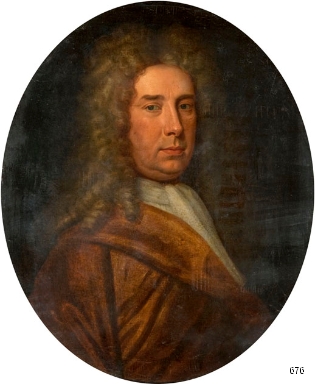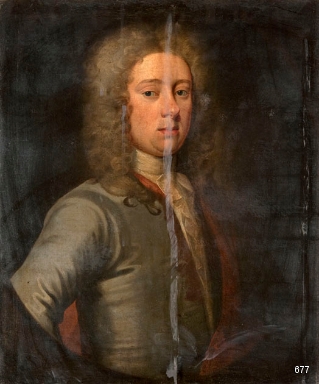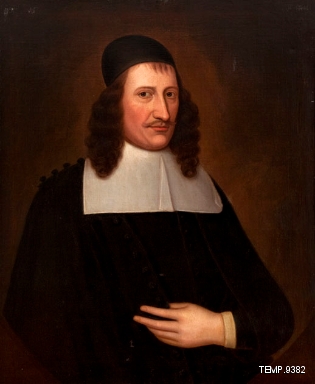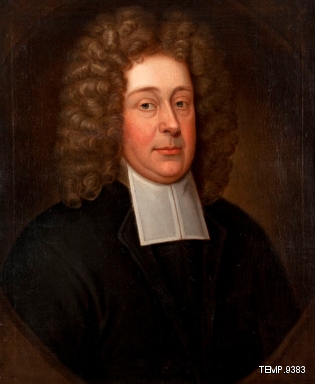The Scottish Identity in Art gallery in Kelvingrove Art Gallery and Museum contains many wonderful objects, including silverware made by the Luke of Claythorn family. Claythorn is in today’s Calton, near the People’s Palace. Recent research on portraits of them in the museum stores has revealed a complicated family history. There are six portraits: three of John Luke, one of James Luke and one for Robert Cross and John Anderson representing this family from the 1620s to 1750s. Some represent links to slavery.
There are two seventeenth-century portraits of John Luke of Claythorn I (1627–1686) whose father was George Luke (1605-1685). On 15 May 1653 he married Janet Anderson (1635–1711), daughter of John Anderson of Dowanhill, whose portrait is also in Glasgow’s collection. He was then called Lord Lieutenant of Glasgow – or Lord Provost as we would call him today.
The Luke family were clearly well connected to the city’s political elite and held important offices. John Luke I was a businessman with interests in Glasgow’s soap and candle factories. He was also an investor in Glasgow’s Easter Sugar House. He held offices in the Town Council, and was elected Treasurer in 1652, 1654 and 1660. John and Janet Luke had five children between 1667 and 1672. These included John Luke of Claythorn II (1665–1731) and James Luke (1672–1726), both of whom we have portraits of. John Luke of Claythorn II added to the family business by becoming a silversmith. In 1699 he joined the Incorporation of Hammermen and was soon supplying churches with communion ware and people with fine goods and jewellery.
James Luke married Isobel Cross (1670–1728). They had a son, John Luke III (1698–1750) of whom there is a portrait. There is also a portrait of Robert Cross of Corse (1639-1705), who was Isobel’s father. Like the Luke family, the Cross family were also involved in Glasgow’s Town Council. Robert was Dean of Guild of Glasgow, so the marriage represented an alliance of political and business interests.
Both the Luke and Cross families invested in sugar and were joint partners in the Easter Sugar House. John Cross (1671–1732), son of Robert, was also Dean of Guild of Glasgow. By then Glasgow had business interests in tobacco and sugar. In 1711 John Cross and the city’s Easter and Wester Sugar Houses backed John Nasmith, a chemist from Hamilton, to find cheaper ways to ferment molasses.
The Luke and Cross family ties are celebrated in a silver mug in the collection inscribed ‘This is a present to Messrs Cross by John Luke’. This was made by John Luke of Claythorn II and complements a sugar bowl from the same period, which reflect the families’ and city’s interests in slave made products like sugar.
Dr Anthony Lewis
Curator of Scottish History
For more information on Glasgow Museums’ collections please visit http://collections.glasgowmuseums.com
Images © CSG CIC Glasgow Museums Collection




